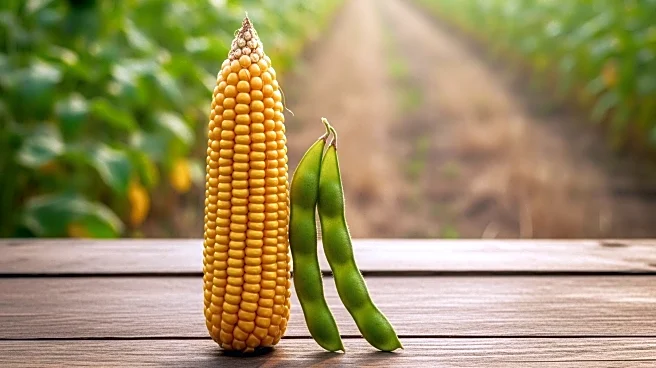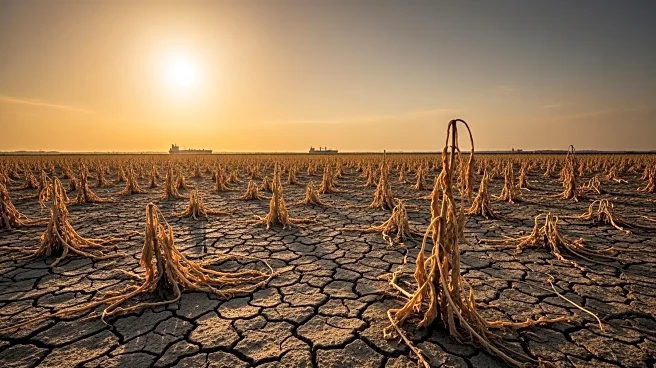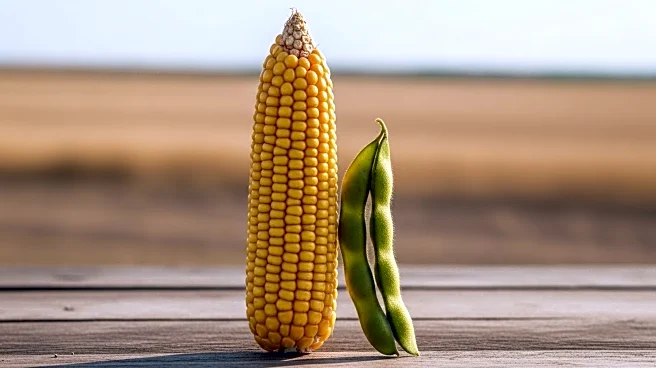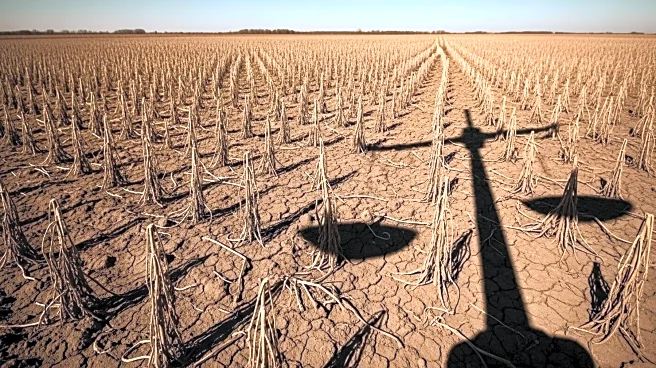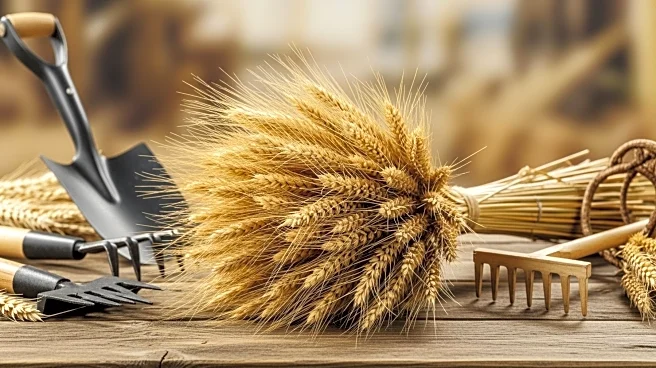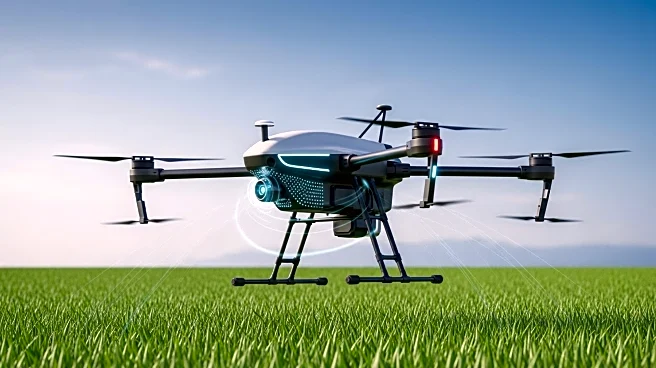What is the story about?
What's Happening?
The USDA's latest Crop Progress report indicates that the corn harvest has reached 18% nationwide, while soybean harvest is slightly ahead at 19%. The report highlights mixed crop conditions, with 66% of corn rated as good/excellent and 62% of soybeans in the same category. Winter wheat planting is underway, with 34% completed and 13% of the crop emerged. The report provides insights into the progress and condition of key crops across the top 18 growing states, noting that North Dakota has yet to begin its corn harvest.
Why It's Important?
The USDA's Crop Progress report is crucial for stakeholders in the agricultural industry, including farmers, traders, and policymakers. It provides valuable data on crop conditions and harvest progress, influencing market prices and supply chain decisions. The mixed conditions reported may impact yield forecasts and economic outcomes for farmers, particularly in states lagging behind in harvest progress. The report also informs policy decisions related to agricultural support and resource allocation, as well as guiding investment strategies in the agricultural sector.
What's Next?
As the harvest season progresses, stakeholders will closely monitor weather conditions and crop maturity to assess potential impacts on yield and market dynamics. The USDA will continue to release weekly updates, providing ongoing insights into crop conditions and harvest progress. Farmers may adjust their strategies based on these reports, optimizing harvest timing and resource allocation. The data may also influence government policy decisions regarding agricultural support and disaster relief, particularly in regions facing adverse conditions.
Beyond the Headlines
The USDA's report highlights the challenges faced by the agricultural sector, including weather-related pressures and disease risks. These factors underscore the importance of research and innovation in developing resilient crop varieties and sustainable farming practices. The report also reflects broader economic trends, as fluctuations in crop conditions can impact food prices and trade dynamics. The agricultural sector's response to these challenges may drive advancements in technology and policy, shaping the future of farming in the U.S.
AI Generated Content
Do you find this article useful?
